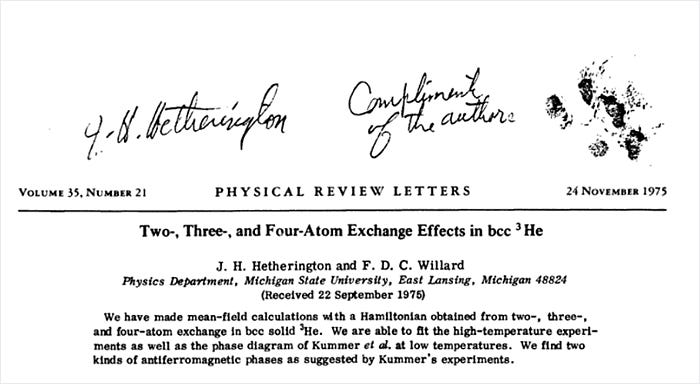I suppose if we exclude the minuscule percentage of animal haters who exist in this world, most of us would love cuddling animals especially a Siamese cat. Cuddling is addictive. The more you do it, the more you feel better.
And why not? After all, Siamese cats are an ancient cat breed and have lived side-by-side with humans for hundreds of years.
The Siamese cats are among the most vocal cats in the world who enjoy conversing with humans. Their high intelligence and an infectious curiosity ensure that you constantly have a high bundle of energy roaming around your house always. Needless to say, they make great companions and excellent pets.
That brings us to a question. Can a Siamese cat author a science paper? No, it is not a weird question.
In fact, it actually happened way back in 1975 when physics professor Jack H. Hetherington at Michigan State University teamed up with his family cat Chester to create a well-researched in-depth paper on the atomic behavior of particles at different temperatures.
It was the first time (and probably the only time in history), a cat co-authored a paper in a reputed journal.
The story of F.D.C. Willard, the cat who co-authored a science paper
The story started in 1975 when Jack H. Hetherington, a professor of physics decided to write a paper on atomic behavior at various temperatures. Hetherington completes the paper and just before he was all set to send it across to the Physical Review Letters, a leading journal in physics, he decides to get it reviewed by a colleague to get a new perspective.
The colleague gave a thumbs-up to the content but noted that Hetherington had used the pompous ‘we’ throughout the paper. As his colleague pointed out, Physical Review Letters only published papers using plural pronouns and adjectives like ‘we’ and ‘our’ if the paper had multiple authors.
This seemingly minor problem puts Hetherington in a quandary.
Remember, this was 1975 long before the internet and the era of word processors. Everything had to be typewritten and that was time-consuming (and of course a painful activity!!!). So Hetherington had two options.
· Retype the whole thing again after making corrections.
· Find a co-author.
Hetherington did not like the first option of retyping the whole thing again. And regarding finding a partner, he would lose remuneration and prestige as both would be divided between the co-authors. Also, Hetherington could foresee a risk that the co-author might try to steal or plagiarize his content. So after an evening’s thought, he hit upon a third option.
He simply added his lovable Siamese cat Chester as a co-author. Since ‘Chester’ was not an official-sounding name, he changed the cat’s name to ‘F.D.C. Willard’ after his species name, Felix domesticus with Willard being the father of Chester.

As Hetherington says in his book More Random Walks in Science later.
“Therefore, after an evening’s thought, I simply asked the secretary to change the title page to include the name of the family cat, a Siamese called Chester, sired one summer by Willard. I added the initials F D in front of the name to stand for Felix Domesticus and thus created F.D.C. Willard.”
The esteemed F.D.C. Willard thus became one of Hetherington’s colleagues from Michigan State University as the physics professor submitted his paper to Physical Review Letters that was published in its issue 35. He even issued reprints later with the signatures (paw prints in case of F.D.C. Willard) of both the authors.
The cat was out of the bag
Eventually, people found out about it and everybody at the university had a big laugh at Chester’s expense. The paper was good so obviously, nobody blamed or ostracized for what Hetherington did. Hetherington himself had no regrets as he said.
“Everyone laughed and soon the cat was out of the bag.”
In fact, the university officials were so pleased that they wanted to make Chester a sort of mascot for the Physics department. In 1975, the college’s Physics Chairman, Truman Woodruff, even wrote to Hetherington, asking him if he could persuade Willard to join the department full time. As the letter said.
“Can you imagine the universal jubilation if in fact Willard could be persuaded to join us, even if only as a Visiting Distinguished Professor?”
As to F.D.C. Willard, his physics career did not take off much after that brief stint of fame but his legacy is still remembered in golden words as the only Siamese cat in the world who actually helped a human by co-authoring a science paper.